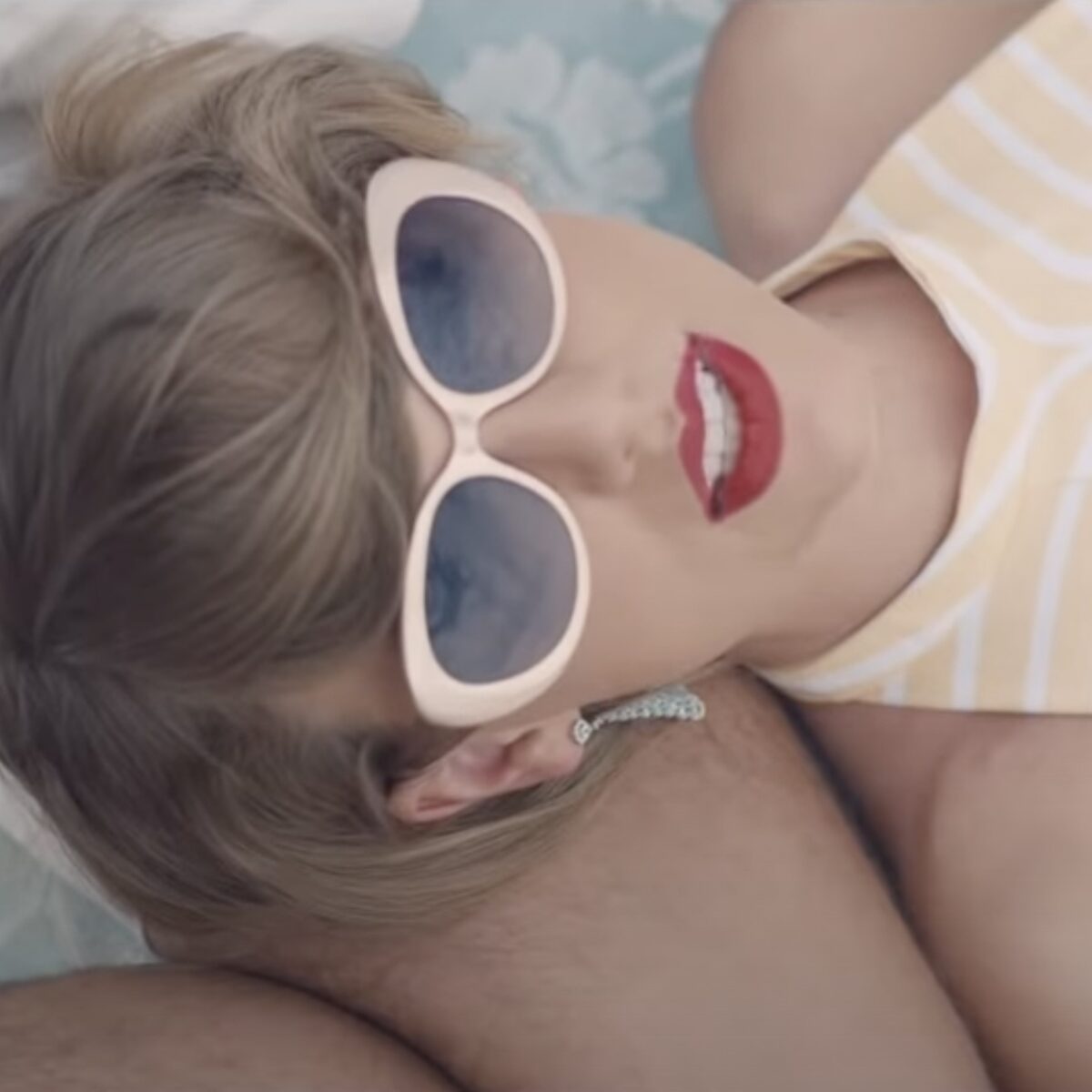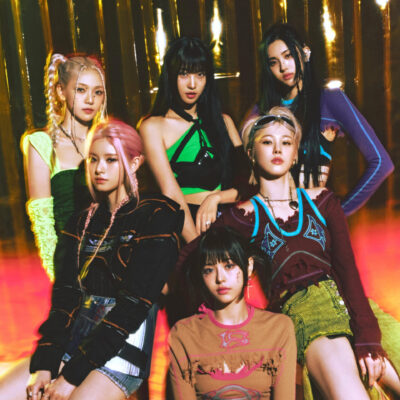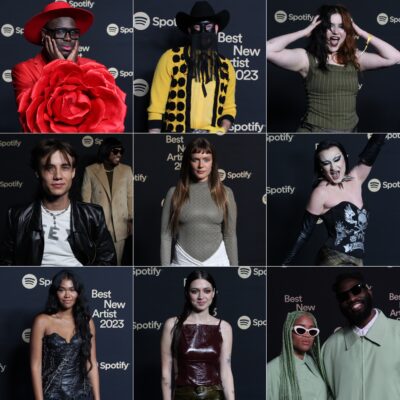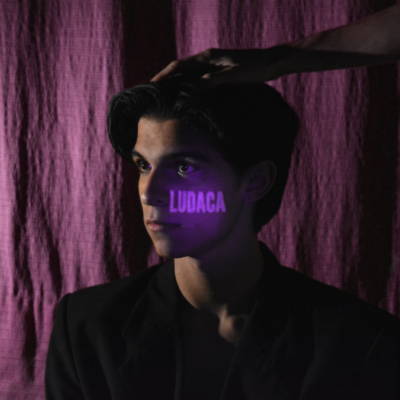Taylor Swift is widely known as one of music’s biggest talents, and “Blank Space” remains one of her best works yet.
Today, November 10th, marks the seven-year anniversary of “Blank Space” – the second single from Taylor Swift’s fifth studio album, 1989. At the surface, it may seem to some as nothing more than pop radio candy, but delving deeper into the song and its background reveals just why it’s one of the decade’s finest works of art.
Taylor Swift began her career making country music – her self-titled debut LP earned her the ears of country fans across the U.S. – and she had been dipping her toes into pop in the years since. The closest she had come to crossing over was with her fourth studio effort, Red, which had seen immense commercial success. Spawning the hit singles “We Are Never Ever Getting Back Together,” “I Knew You Were Trouble.,” “22,” “Begin Again” and “Everything Has Changed,” it was clear that Swift was gently steering away from her country roots and had begun to experiment more and more with a new genre.
Swift has explained that while writing Red, the melodies that were coming to her were pop, not country. A desire to push herself creatively led her to working with new producers. She reached out to producer Max Martin and the pair worked together on three tracks included on the record: “Back Together,” “Trouble” and “22.” However, Swift was limited by her label on the amount of pop songs she was allowed to include on the album, and still had an attachment to being a country artist at that point, and so the LP was released under the label of “country.” Upon its release, reviews of Red noted that while the songwriting was great, it was sonically inconsistent, and the “country” label was debated.
Red is now known, among many things, and heartbreakingly for fans, for failing to pick up a trophy at the 56th Annual Grammy Awards, where it had earned four nominations. The announcement of ‘Album of the Year’ at the ceremony has become infamous: “And the Grammy goes to… Rr-andom Access Memories, Daft Punk!” In an interview with Grammy Pro, Swift detailed her upset at the loss and the subsequent determination to make a better, more sonically cohesive record. “You have a few options when you don’t win an award. You can decide ‘Oh, they’re wrong! They all voted wrong! […] Or… you can say ‘Maybe they’re right. Maybe I did not make the record of my career. Maybe I need to fix the problem, which was that I have not been making sonically cohesive albums. I need to think about whether I’m listening to a scared record label and what that’s doing to the art I’m making.’”
Thus, the concept for 1989 was born. 80s synth pop, a small team of producers, almost a full sonic 180° on her previous works. She took the loss and used it to fuel her art. Swift had found a new sound.
“Blank Space,” she has said, is satire. For years, the media had controlled the narrative that surrounds her and her love life. A crazy serial dater who could win over any guy she wanted, jetting across the world “collecting” men. A jealous girlfriend who has the most dramatic breakups, yet everybody still wants her. She thought about how complex this character that they had built around her truly was and decided to play the media at its own game. “I need to write a song from this girl’s perspective,” Swift remembers thinking, “If you wanna play this way, we can play this way.” The lyrics for the track came into fruition over the course of a year or so; she would note down lines as they came to her randomly. And the result? Nothing short of pop perfection.
The Lyrics
“Nice to meet you, where you been? I could show you incredible things,” Swift opens the song with a greeting – we meet the woman we’ve heard so much about. She’s telling us everything we should already know: we’re aware of her superstar status. The tone has been set.
“Saw you there and I thought ‘Oh my God, look at that face, you look like my next mistake” This is what we’ve been told to expect from Swift – she’s always out searching for her next boyfriend, which will inevitably end in heartbreak. She’s playing into the character.
“New money, suit and tie, I can read you like a magazine” It’s all materialistic. Of course, she could never truly be interested in a guy, it had to be for the money. This could be a hint of irony; it’s clear that Swift does not need to date a man for his riches and so, while still in character, she emphasizes the ridiculousness of it all. Everything is fabricated.
“I’m dyin’ to see how this one ends,” She sings later on in the verse. She knows the relationship won’t end well, but that’s all part of the fun. “I can make the bad guys good for the weekend” she ends the verse with. She’s got powers; men change their ways for her. She’s an elusive, magical serial dater.
We then hit the soaring chorus. Swift is confident, playful, and sounds great. She tells us about her “long list of ex-lovers” (famously, and somehow, misheard to be “Starbucks lovers”?) who will all confirm what you’ve already heard about her – that she’s “insane.” And then comes the iconic titular line:
“But I’ve got a blank space baby, and I’ll write your name” There’s a small click after “baby,” one that Max Martin was ecstatic sounded so “annoying.” It emphasises the irritating character she’s playing up to, it’s a small, yet perfect addition to the song. The production is simple as a means of putting the lyrics at the forefront, placing primary focus on what Swift is singing about.
The verses after the first chorus are when the truth behind the picture perfect girl we met in the first two verses really begins to unravel. She begins with “Cherry lips, crystal skies,” paints the picture of an idealistic relationship – with “cherry lips” helping to maintain this air of innocence she is supposed to have. “Stolen kisses, pretty lies” provides us with a hint of another side to Swift. The “pretty lies” acts a contrast to the “cherry lips,” suggesting that she is not the person she appears at the surface (an idea she returns to later on) – the sweet, innocent girl has a lot of secrets. She explains how she will “Find out what you want, be that girl for a month,” mocking the media for how she is portrayed to scout out her next man. The short timeframe of “a month” also plays on the serial dater image, with Swift having been shamed for moving on “too quickly.”
The song progresses alongside her relationship, quickly turning sour and revealing her for who she really is (supposed to be). “Screaming, crying, perfect storms, I can make all the tables turn” Here, she begins to switch into her breakup persona, which she uses to break men’s hearts in the most theatrical of ways possible. Swift has made sure to cover every aspect of this character and all of its complexites.
The final line of the fourth verse is one of the most memorable of the song (which is saying a lot, considering it’s a bonafide modern-day classic): “I get drunk on jealousy, but you’ll come back each time you leave, cause, darling, I’m a nightmare dressed like a daydream” It became an instant Instagram caption staple and perfectly captures the essence of the person Swift is made out to be. At the surface, she appears sweet and innocent, the love of your life, but once you get close, her true colors shine through.
Lyrically, the song is perfect. Swift captivates the listener by essentially confirming what they have heard about her, which is frankly the opposite of what one would expect her to do. She takes back control of the narrative surrounding her love life by firing back at the media with its own ammunition. It’s much harder to shame her for her love life when she’s already done that herself, especially by “admitting” to all she’s accused of doing and being.
No pop song of this calibre would be truly complete without an accompanying music video, and the Joseph Kahn-directed clip does not disappoint.
For the first half of the video, all seems well between Swift and her love interest. They do what one would assume rich couples do in a mansion. We then begin to see hints of the maniacal, obsessive lover that Swift truly is. She hangs up his portrait in her hallway (which appears to be lined with portraits of her past lovers – one which we can see she has stabbed) and she gets jealous when he texts someone else. A huge fight soon errupts – the inevitable breakdown of this serial dater’s relationship. It’s all downhill from here.
Swift, the crazy, now assumably-ex, girlfriend begins to destroy her lover’s possessions; his portrait becomes the next victim of her stabbing. He realises the mistake he has made in getting involved with her as he discovers her collection of destroyed portraits, realises she has poisoned an apple and is in the process of clubbing his car. The video is a perfect visual encapsulation of the song, which itself is a perfect encapsulation of the media’s portrayal of her.
The track became a colossal hit. It was met with critical acclaim, nominated for three GRAMMYs and topped charts across the globe. Swift became the first woman in history to replace herself at No. 1 on the Hot 100 when it knocked “Shake It Off” from the top spot. With over 8 million certified units in the US, it earned an 8x Platinum certification from the RIAA. Its music video is one of the most-viewed ever, at over 2.881 billion at the time of writing.
For years, the media had tried to control the narrative around Taylor Swift’s life and the public’s perception of her. In a true stroke of genius, she took the lies and used it to her advantage, constructing one of the best pop songs in recent memory. With “Blank Space,” Swift had the last laugh.





